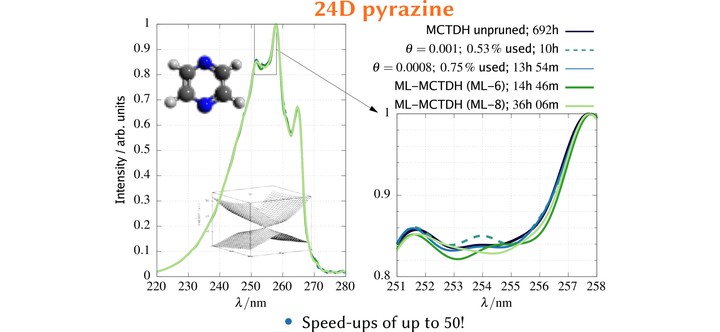Dynamical pruning of the multiconfiguration time-dependent Hartree (DP-MCTDH) method: An efficient approach for multidimensional quantum dynamics

Abstract
The main project of my PhD studies (in the groups of Prof. B. Hartke and Prof. D. Tannor) was the exploitation of sparsity in vibrational and electronic wavefunctions. Exploiting the sparsity means pruning of the underlying basis. This is similar to selected CI techniques for electronic structure calculations. Particularly successful was the application of dynamical pruning to the multiconfiguration time-dependent Hartree (MCTDH) method. While simple static pruning has already been studied 20 years ago by Worth [1], the conclusions from this mainly was that even static pruning requires too much bookkeeping such that this approach has quickly been abandoned. Due to this experience, many MCTDH developers advised me against developing methods based on pruning. Instead, I started working on a completely new MCTDH implementation with pruning. This was successful and the developed methods were applied to up to 24-dimensional systems and were up to 50 times faster than conventional MCTDH and competitive with state-of-the-art but more complicated multilayer MCTDH. The reasons for this speedup are newly developed algorithms, an efficient implementation, and a dynamical pruning instead of a simple static one. Furthermore, I applied, also for the first time, dynamical pruning both to the orbitals and the underlying grid representation. This means that the used basis changes at each time step at two different levels.